After arriving in Antarctica on Christmas Day, the first week was spent doing the necessary inductions for health and safety, survival training, communications etc. And then, the Diving Officer (who has to do a check-out dive with every newly arrived scientist) was injured from a running accident on New Year's Eve... which meant that I didn't get into the water for the first week of 2018 either. Instead, I did terrestrial field work on Anchorage and Leonie Island, and I had the marvellous experience of a flight to Fossil Bluff on Alexander Island, about 500 km south of Rothera.
This blog chapter is the illustrated diary of my next 4 weeks at Rothera which followed, until my departure to the Falkland Islands on Feb. 5. It gives you a pretty good idea of what life and work as a marine biologist in Antarctica can look like.
You may realize that during many days during this period, the intended work was impossible for a range of external factors. Such a large amount of downtime is very typical of working in Antarctica. It is generally not considered a problem, as long as one has budgeted for this in the schedule of such an expedition. For this reason, expeditions to Antarctica usually take months rather than weeks!
It should also be said that such downtime is rarely wasted - Rothera and certainly most other, modern research stations in Antarctica have very good office facilities (in the case of Rothera, with internet and landline phone lines - within the area code of Cambridge, England!) which enable scientists with multiple responsibilities at home to keep on top of a good part of their regular jobs "in the real world". In my case, that meant that while at Rothera for 6 weeks between Dec. 25, 2017 and Feb. 5, 2018, I managed to write a reasonably advanced draft of a paper (which should have been written since summer 2014!), I participated in an EU ITN proposal led by a Dutch friend and colleague, and I revised another paper for JBIC which was even accepted while I was still in Antarctica.
And, of course, the recreational options at Rothera are superb, so that downtime is not really downtime after all, but rather an opportunity to enjoy the Antarctic nature and scenery, to write letters to loved ones and friends around the world, to make new friendships, and a plethora of other pleasant things.
Life in Antarctica is very good indeed - in a way, it feels like being in a better society in Utopia. It struck me that hardly anybody talks about money and politices. Indeed, money and politics are almost irrelevant down here - BREXIT, Trump, the war in Syria, etc. seemed like a zillion light years away. Also, I noticed that hardly ever, people argued. Instead, they talk of the rest of civilization as "the real world", as if being in Antarctica is indeed a life in Utopia, or a dream that will at some point abruptly come to an end.
Enjoy!
Jan. 8
The Diving Officer is fit to dive again and we have all the equipment
sorted for me to start diving here... but right now, a leopard seal is
lurking in the water here at Rothera, which means diving is prohibited!
And in around 2 h, the HMS Protector (the Royal Navy icebreaker) is
expected at the Biscoe Wharf, so no diving either. All this looks like a
perfect case of Murphy's Law to me.
(Click on the images for a full-screen, high-resolution view.
You can browse by using the cursor buttons.)
You can browse by using the cursor buttons.)
Much
awaited - relief from the Royal Navy icebreaker HMS Protector, arriving
from Stanley in the Falkland Islands. On board: fuel and much-needed
cargo for Rothera, including food and scientific equipment. I just hope
that this also includes my dive equipment and boxes with research
equipment.
The Royal Navy icebreaker HMS Protector at the Biscoe Wharf
The Royal Navy icebreaker HMS Protector at the Biscoe Wharf
This is called "relief" - whenever a ship brings fuel or food for the base
This is called "relief" - whenever a ship brings fuel or food for the base
Feb. 9
The
amount of beer and wine delivered by HMS Protector to Rothera was
impressive. The photo shows only a small fraction. Of course one has to
keep in mind that these stocks have to last for at least 15 months.
We made a chain for hauling the boxes of beer, wine and other drinks to the upstairs store of the bar
One of the 2 drinks stores on base re-stocked
These pallets contained boxes of drinks upon arrival
Jan. 10
I was again ready to do my check-out dive half an hour ago... fully
kitted up, about to launch the boat... when the seal watch team spotted a
big leopard seal with its characteristic grin which had come to welcome
me back to diving at Rothera! Went back inside, moved all the kit back
into the shed, got out of my dry suit without even having gotten wet. No
diving for the rest of today.
Scientists and staff of Rothera going on board HMS Protector for the farewell BBQ and party
HMS
Protector - the farewell BBQ and party before leaving Rothera the next
day. Note that the name of the small survey boat on the side is "James
Caird" - named after the small boat which took Shackleton and a few of
his men from Elephant Island to South Georgia, enabling the rescue of
the remainder of the crew left behind months later.
HMS
Protector - the farewell BBQ and party before leaving Rothera the next
day. Does it look like it was cold? I can tell you, it was...!
HMS
Protector - the farewell BBQ and party before leaving Rothera the next
day. Does it look like it was cold? I can tell you, it was...!
HMS Protector - the farewell BBQ and party before leaving Rothera the next day
HMS Protector - the farewell BBQ and party before leaving Rothera the next day
The helipad of HMS Protector
HMS Protector
HMS Protector - lowering the flag. This ceremony is performed every evening.
The main purpose of this ship is to ascertain UK sovereignty over the British Antarctic Territory, but also the Falkland Islands, South Georgia, etc.
Leonie Island under the clouds with a bit of evening sunlight
HMS Protector has a full professional dive team for work under polar conditions
HMS Protector has a full professional dive team for work under polar conditions. Here: the dive shed
The control room of HMS Protector's power plant...
...the workshop...
...the cargo hold...
... a containerized field hospital...
A
BAS-owned excavator which was surplus to requirements at Rothera being
shipped back to the Falkland Islands (and from there probably to South
Georgia)
HMS Protector's gym...
...sauna...
...and dining room.
One of the crew cabins of HMS Protector - quite nice and cozy, I must say!
HMS
Protector is a Royal Navy ice patrol ship built in Norway in 2001. As
MV Polarbjørn (Norwegian: polar bear) she operated under charter as a
polar research icebreaker and a subsea support vessel. In 2011, she was
chartered as a temporary replacement for the ice patrol ship HMS
Endurance and was purchased by the British Ministry of Defence in
September 2013.
The conference room. HMS Protector also supports diplomatic missions, and this room has repeatedly served high-level meetings
HM The Queen and the Prince of Edinburgh
HMS Protector supports a range of oceanographic missions in the Southern Ocean and Antarctica
View from the bridge of HMS Protector
A rather unusual view of the Bonner Marine Lab
and the Dutch-owned Dirck Gerritsz Laboratory at Rothera
and the Dutch-owned Dirck Gerritsz Laboratory at Rothera
As
a military vessel, HMS Protector is armed. The black metal structure is
for holding a heavy machine gun, while the white boxes can store
ammunition. However, within the Antarctic Treaty Area the weapons and
ammunition are stowed away in the cargo hold.
The bar of HMS Protector. Farewell party of scientists and staff from Rothera and HMS Protector.
The bar of HMS Protector. Farewell party of scientists and staff from Rothera and HMS Protector. Note that the windows are tinted for keeping the intense polar light out at what should be night time.
My home for 6 weeks! Giants House, Rothera...
My home for 6 weeks! Giants House, Rothera...
HMS Protector in the midnight sun
Jan. 11
It is now clear that this Antarctic expedition is being ruled by
Murphy's law. Three weeks and one day after leaving Aberdeen, still not a
single bit of science of the original project done. I have never seen
an expedition like this one.We were again ready to do the check-out dive this morning. The leopard seals were having a day out and leaving us alone, the sea conditions were perfect, no ice, etc. - we were on the boat, all the checks done, all perfect, within less than a minute from jumping in. The supervisor strapped the mask to my face (we are using full-face masks with voice communications, which require an extra person to strap them to the diver) - when a silicone strap of the mask broke. Dive cancelled, this will require a complete change of mask (since the wrong type of spare straps was sent to Rothera earlier in the season). We want to try again this afternoon, but I am confident that until then, the leopard seals and the icebergs will be back.
Ice floes with a resting seal
Jan. 11
Jan. 11
Jan. 12
The leopard seals are back and all diving is cancelled until 16.30  :(
:(
According to the Rothera Diving Officer, during the 2nd morning dive today, "a very active leopard seal showed up, swimming next to the boat, while the 2 divers were in the water". Dive aborted (the divers were called back immediately by voice comms), back to the dive shed, diving prohibited for the next 4 h (which de facto cancels my scheduled dive this afternoon). Welcome to life as a research diver in Antarctica.
According to the Rothera Diving Officer, during the 2nd morning dive today, "a very active leopard seal showed up, swimming next to the boat, while the 2 divers were in the water". Dive aborted (the divers were called back immediately by voice comms), back to the dive shed, diving prohibited for the next 4 h (which de facto cancels my scheduled dive this afternoon). Welcome to life as a research diver in Antarctica.
Ice floes in North Cove, Rothera
Today
was scrub-out day! I participated in the team cleaning the runway from
debris of any kind that could get dangerous to aircraft (especially
turbines and propellers).
Elephant seal blocking the runway - an almost daily occurrence
Flipper of an elephant seal blocking the runway
Elephant seal blocking the runway - an almost daily occurrence
Elephant seal blocking the runway with a jogger in the background
Meltwater pond with snow algae, Rothera Point
Meltwater pond with snow algae, Rothera Point
Fighting elephant seals, Rothera Point
Fighting elephant seals, Rothera Point
Fighting elephant seals, Rothera Point
Fighting elephant seals, Rothera Point
Fighting elephant seals, Rothera Point
Sleeping Weddell seal, Rothera Point
This
was right here, at Rothera Point, exactly 7 years ago... when I took
this photo of a very cute seal under the midnight sun (certainly one of
my favorite photos from that expedition!) 




In the meantime - Hooray! - since my last post, diving has indeed
started, I got into the water yesterday afternoon. Another dive is
schedule for this afternoon - provided of course that there are no
leopard seals, orcas, icebergs, and that the wind doesn't pick up too
much.
Jan. 13
No diving today, instead the divers were trained for encounters with
leopard seals (in theory) and (in practice) how to rescue an unconscious
diver out of Antarctic waters. In the latter part, I first was one of
the rescuers and then playing the unconscious diver who was pulled out
and brought back to life. Hopefully diving will resume on Monday.
Saturday evening dinner with Pete Convey... the food and wine were amazing...
View from our dining table (!!!)
...wine from Uruguay...
...Greek salad...
...and then this view!!
...seen
from our dining table (I did not have to get up to take this photo
while having dinner): two elephant seals in the water...
Baklava, pineapple, melon... Rothera should appear in a gourmet's travel guide of the world!
After dinner, my almost usual walk under the midnight sun (this time, for 3 h!):
An elephant seal on the runway...
An elephant seal on the runway...
elephant seal on the runway
elephant seal on the runway
Weddell seal on the shore, Hangar Cove
The explosives store (for good reason, a bit away from the buildings of the base!)
Elephant seals in the water, Rothera Point
Elephant seals in the water, Rothera Point
Adelie penguins, Rothera Point
Adelie penguins, Rothera Point
Adelie penguins, Rothera Point
Adelie penguins, Rothera Point
Crabeater seal, Rothera Point
Crabeater seal, Rothera Point
Adelie penguins with antenna and New Bransfield House, early hours of Jan. 14
New
Bransfield House. Note the solar panels for heating / hot water on the
side (which faces north, where the sun is most intense).
New Bransfield House
Jan. 14
Today
was Sunday, and the leopard seals were having a day off (since we were
not diving anyway). Instead, Rothera was visited by a pod of Minke
whales! Enjoy the images, it was magic this evening.
(And, be sure, the leopards will be back on Monday morning, when we want to resume diving.)
(And, be sure, the leopards will be back on Monday morning, when we want to resume diving.)
Sunday afternoon - another hike up the Ramp and across the glacier to the Caboose
Sunday afternoon - another hike up the Ramp and across the glacier to the Caboose
Arrived at the Caboose - several others had come here with 3 snow mobiles for skiing and snow boarding
In the absence of a ski lift, a skidoo does the job
Snow boarding
In the absence of a ski lift, a skidoo does the job
The Caboose from beneath the Reptile Ridge
Antarctic solitude in the interior of Adelaide Island
Reptile Ridge
Reptile Ridge
Antarctic solitude in the interior of Adelaide Island
Antarctic solitude in the interior of Adelaide Island
Edge of the glacier and icebergs north of Rothera
Edge of the glacier and icebergs north of Rothera
Teresa, one of the 2 Diving Officers, on a Gator Truck
And
then, probably the highlight of the day: Minke whales (Balaenoptera
acutorostrata) showed up! Here: East of Cheshire Island, with Pourquoi
Pas Island in the background. Back in 2010-2011, I had quite a number of
dives right at the spot where the whale is right now.
Minke whale with Jenny Island in the background
Minke whale with Leonie Island and Mt. Liotard in the background
Minke whale in Ryder Bay
Minke whale with Leonie Island and Mt. Liotard in the background
Minke whale with Leonie Island and Mt. Liotard in the background
Minke whale in Ryder Bay
Minke whale with Leonie Island and Mt. Liotard in the background
Minke whale in Ryder Bay
My traditional evening hike around Rothera Point. - here: view from Monument / Cross Hill
Fighting elephant seals at Rothera Point
Jan. 15
Hooray.
Serious diving in Antarctica has now started for me and my project
here, I had a nice dive this morning and everything went very well. I
have just returned from seal watch on Monument / Cross Hill, covering
for the dive team presently in the water: I always enjoy this, despite
the freezing wind and drifting snow today (the weather today is not
nearly as nice as yesterday). Only friendly and cute seals are around!
The leopard seals are having an extended weekend and didn't show up for
work today, which means that the Rothera Dive Team will manage to do 3
or 4 dives today.
Today is the half point for my time in Antarctica - 3 weeks behind me, 3 to go. If I can get 2 weeks (out of 6 in total) of good diving here, I am happy. There is a good reason why trips to Antarctica take months rather than weeks.
Today is the half point for my time in Antarctica - 3 weeks behind me, 3 to go. If I can get 2 weeks (out of 6 in total) of good diving here, I am happy. There is a good reason why trips to Antarctica take months rather than weeks.
Dive
at Cheshire Island, Rothera Point. The photo shows several big
invertebrates: the big sea star Cuenotaster involutus (center), the
sponge Dendrilla antarctica (top left), the big ascidian Cnemidocarpa
verrucosa (left) and the sea cucumber Heterocucumis steineni
(center above the sea star)
(center above the sea star)
Dive at Cheshire Island, Rothera Point: Cuenotaster involutus
We are not quite sure about this yellow sea cucumber, but my colleagues suspect this might be a Heterocucumis sp.
Iridaea
cordata, a typical canopy-forming red alga in Antarctica. Actually
recent research has suggested that this may be a different species of
Iridaea, possibly endemic to Antarctica, than I. cordata.
Cheshire Island, Jan. 16
Cheshire Island, Jan. 16
Dive
at Cheshire Island, Rothera Point: The red alga Palmaria decipiens with
the sea urchin Sterechinus antarcticus and the limpet Nacella concinna
This lovely beast living on the Antarctic seabed feasts on what the
leopard seals have left over. It's like an animal from the worst of your
nightmares:
The hoplonemertine "monster worm" Parborlasia corrugatus - the main scavenger for dead animals on the Antarctic seabed: I recently co-authored a paper ( https://
The hoplonemertine "monster worm" Parborlasia corrugatus - the main scavenger for dead animals on the Antarctic seabed: I recently co-authored a paper ( https://
Iridaea
cordata, a typical canopy-forming red alga in Antarctica. Actually
recent research has suggested that this may be a different species of
Iridaea, possibly endemic to Antarctica, than I. cordata.
Heterocucumis steineni (Holothuria) - the one in the center is feeding and has two tentacles inserted in its mouth
Kallymenia antarctica
Dive at Cheshire Island, Rothera Point: Cuenotaster involutus
Jan. 16
Jan. 16
We are not quite sure about this yellow sea cucumber, but my colleagues suspect this might be a Heterocucumis sp.
Desmarestia
menziesii, the main canopy-forming brown alga in this part of
Antarctica. Further north, there are quite a few more canopy-forming
species (Ascoseira mirabilis, Himanthothallus grandifolius, Desmarestia
antarctica), but the rather extreme conditions here have resulted in an
impoverished flora.
Dive at Cheshire Island, Rothera Point:
The ascidian Cnemidocarpa verrucosa (left) and the sponge Mycale acurata (center / right)
The ascidian Cnemidocarpa verrucosa (left) and the sponge Mycale acurata (center / right)
Aurelia
during the safety stop at 5 m. Note the aluminum stick as "seal prod"
to scare away leopard seals in case they were to show up.
Seabed at around 6 m. This site has been hammered by icebergs, that's why so little (other than coralline red algae) grows here!
After diving myself in the morning, I was providing seal watch (for leopard seals) for the first dive team in the afternoon. The weather was a lot less nice than the evening before - an icy wind was blowing, and snow was falling... but I actually enjoy being on seal watch!
View from Monument / Cross Hill during my seal watch today
This is the spot where the Minke whales had shown up last night (off Cheshire Island).
Encounter between a Twin Otter and a seal on the runway
Tonight's
dinner: fried halloumi and Caesar salad. For Antarctica, that's
exceptional!! (The fresh ingredients arrived here on the last Dash-7
flight from Chile.)
Evening
talk by Charlie Bibby, Chief Photographer of the Financial Times
(London). Charlie and his colleague Pilita Clark are currently visiting
Rothera to gather material first-hand for covering Antarctic research
and climate change (I was among those who were interviewed). Their
investment of time and effort, but also their background knowledge is
impressive. Charlie has shot many iconic photos over his career, which
have stuck in the public mind and memory - like this one of Theresa May
being handed a P45 (notice of termination of employment) at the
disastrous last Conservative Party Conference.
An inquisitive Adelie Penguin exploring the base
Also this is what summer in Antarctica can look like
(today's view from the Wharf)
(today's view from the Wharf)
Members of the Rothera Marine Team at work in snow and ice
Jan. 18
After a slow start, things are now running as I had hoped they would
when I was planning this project in Antarctica. Had my 4th dive today,
which may not sound like much in a tropical or Mediterranean field site,
but which is pretty good for Antarctica (even though still a far cry
from the 17 dives which I managed to do here in 2010-2011). The leopard
seals seem to have gone on holidays for the whole week and left us
alone, but the wind became quite fierce after this dive and Aurelia and I
were the only people in the water here today. The dive yielded a new
record of a brown alga, a Desmarestia sp., for this part of Antarctica -
we will be processing the materials in the Bonner Lab for the remainder
of the afternoon, in order to enable follow-up work in Aberdeen and
Roscoff.
Aurelia
before our dive today off the Biscoe Wharf: This photo gives a pretty
good impression of the equipment that we are using here: full face mask
with voice comms, 2 separate cylinders (one as bailout), dry suit, seal
prod (the aluminum stick to scare away leopard seals).
Ca. 15 m deep: the limpet Nacella and the ascidian Cnemidocarpa. The rocks are covered by coralline red algae and Spirorbis sp.
Ca. 15 m deep: The starfish Odontaster validus
The ascidian Cnemidocarpa, the sponge Dendrilla, and the sea cucumber Cucumaria georgiana
Probably the best shot from this dive:
Alcyonium antarcticum
Alcyonium antarcticum
We are not quite sure about this yellow sea cucumber, but my colleagues suspect this might be a Heterocucumis sp.
A juvenile of the hoplonemertine Parborlasia corrugatus
Diplasterias sp.
Encrusting red algae are very common.
The filamentous algae on the limpets are either colonial diatoms or brown algae such as Pylaiella
The filamentous algae on the limpets are either colonial diatoms or brown algae such as Pylaiella
...and the previously unrecorded Desmarestia, the highlight of the dive!
the previously unrecorded Desmarestia
the previously unrecorded Desmarestia
the previously unrecorded Desmarestia
Desmarestia menziesii
Iridaea sp. (probably not chordata)
Towards
the end of today's dive, Aurelia took this photo of me (using my new
Olympus TG-5 Tough)... it was a very good dive: a new record of a
Desmarestia species previously unknown for this part of Antarctica.
End of the dive... the recovery operation.
In the evening, I recorded a couple of selfie videos, showing me explaining some typical animals of Antarctica to children - in Greek. This was the idea of my friend Maria Tsiakardoni, who works at a kindergarten in Athens. Initially we wanted to do a videoconference, but the internet in Antarctica is too slow for this - we therefore decided that I would pre-record several videos, transfer them to Athens, and then have a live phone conference on Tuesday Jan. 23. The selfie below with an Adelie penguin is from the first of these videos:
Poo of a seal which has been feeding on krill - therefore the pink color
Elephant seals and blue-eyed shag (king cormorant) at Rothera Point.
Elephant seals fight a lot... and they often injure themselves in doing so.
Jan. 20
It's the weekend also at Rothera, and the leopard seals are off again...
which means that Simon Morley and I got to do a very nice dive in South
Cove today, checking out a long-term temperature logger which is
deployed there at 19 m depth, tagging an anemone for long-term
monitoring, and then doing a bit of seaweed survey & photography.
Before
we could start diving, we had to support the colleague on seal watch on
the shore by checking out whether several groups of seals on ice floes
in the bay did not contain any leopard seals, but only friendly seals
Searching for leopard seals near our dive site in Ryder Bay
View of the interior of Ryder Bay, Adelaide Island
Searching for leopard seals near our dive site in Ryder Bay
Before
we could start diving, we had to support the colleague on seal watch on
the shore by checking out whether several groups of seals on ice floes
in the bay did not contain any leopard seals, but only friendly seals
A rather unusual view of Rothera
Simon Morley getting his camera ready just before the dive
Simon
Morley at work in South Cove, approx. 20 m deep. I am deliberately
showing such images with "crap" visibility to give you a better idea of
the conditions that we are working in.
Temperature logger in South Cove, approx. 20 m deep
Kallymenia antarctica, coralline red algae, and an anemone (Isotaelia antarctica?) in South Cove
Simon tagging an anemone in South Cove for a long-term study
Simon tagging an anemone in South Cove for a long-term study
Alcyonium antarctium, South Cove, ca. 15 m
South Cove, ca. 15 m - the polychaete in the center is probably Flabelligera mundata
South Cove, ca. 15 m
(Isotaelia antarctica?)
(Isotaelia antarctica?)
Kallymenia antarctica (Rhodophyta), South Cove, ca. 15 m
South Cove, ca. 5 m (Sterechinus neumayeri ?)
South Cove, ca. 5 m
South Cove, ca. 5 m - epiphytic Pylaiella and colonial diatoms growing on Nacella limpet shells
The American ARSV Laurence M. Gould is visiting Rothera today for its
traditional annual visit - currently the vessel is taking some of our
colleagues on a mini-cruise into Marguerite Bay (I didn't join this time
- I had this experience in early 2011, and given that the present
schedule has slipped a bit, diving today had priority). And tonight
there will be the traditional "Gould Night" at Rothera (will write more
about that probably tomorrow).
The ARSV (Antarctic Research and Supply Vessel) Laurence M. Gould at the Biscoe Wharf, Rothera
The
ARSV Laurence M. Gould is owned by a company, Edison Chouest Offshore
Inc. (ECO), and is on long-term charter to the National Science
Foundation (NSF) for the U.S. Antarctic Program. L.M. Gould was an
eminent American scientist working in the Arctic and Antarctic in the
early 20th century.
The main business of ECO is not the provision of Antarctic logistics, but to support the offshore industry in the Gulf of Mexico.
The main business of ECO is not the provision of Antarctic logistics, but to support the offshore industry in the Gulf of Mexico.
Dining room of the ARSC Laurence M. Gould. I was invited for dinner here - food was excellent.
Afterdeck of the ARSC Laurence M. Gould
Afterdeck of the ARSC Laurence M. Gould
The venue for this year's edition of the legendary Gould Night at Rothera: the workshop...
Two excavators served as beer coolers for the Gould Night...
Live
music by the Rothera Band in the workshop during this year's Gould
Night. The flag above the stage is that of the British Antarctic
Territory, which, like all other UK Overseas Territories, has its own,
distinct flag.
The Rothera Band playing during this year's edition of the legendary Gould Night
In the workshop during this year's Gould Night
Simon and Dave during this year's Gould Night
Scenery on base around midnight during the Gould Night
ARSV Laurence M. Gould at the Biscoe Wharf
Jan. 21
Yesterday
evening, we had this year's edition of the legendary Gould Night at
Rothera: The crew of the American ARSV Laurence M. Gould was visiting
Rothera for their traditional, annual visit which included a soccer
match (this year, the Brits won 2-0) and a nice party with live music in
one of the sheds. Legend has it that part of the motivation for this
visit is that American ships and bases in Antarctica are "dry", while
their British counterparts are not. Therefore, the Americans like to visit the Brits every now and then for a good party.
A bit of Rothera history: Pictured below is the 2nd oldest building on base (now the "chippie shed"), built in 1974. A team of men (there were no women in Antarctica then) and sled dogs used to share it. Now this is the wood workshop, but I heard that it might be demolished in 2-3 years, which I find quite sad since it's a monument to the history of Rothera and it will be impossible for modern-day polar researchers and students to even imagine how basic and difficult life was here for their predecessors only 40 years ago.
And this is Jim Scott showing me the very oldest building at Rothera ("Bingham's"), from the 1960s! Likewise, this used to be a building housing men, dogs, and everything else that was needed on base in those days.
The summer season in Antarctica is coming to an end, and numerous foreign aircraft are using Rothera (the only base with a runway in this part of Antarctica) as a stopover on the way back to South America. This Basler BT67 (a refurbished DC3) is operated by the German Alfred Wegener Institute, but registered in Canada (https://www.awi.de/en/
Jan. 28
A snowy Sunday, spent in my office at the Bonner Lab. Days like this are part of life in Antarctica!
I did the final revisions for a paper entitled "Emission of volatile halogenated compounds, speciation
and localization of bromine and iodine in the brown algal genome model Ectocarpus siliculosus" for resubmission to Journal of Biological Inorganic Chemistry. And, within about an hour, I got the reply from the editor: Accepted! Hooray. The paper is dedicated to my friends Yasuyuki Muramatsu (Gakushuin University, Tokyo), who untimely passed away during the writing of this article, and to Alison Butler (University of California, Santa Barbara), on the occasion of her Bader Award from the American Chemical Society.
One
of the most spectacular inhabitants of the Antarctic benthos, the giant
sea star Labidiaster radiosus, with almost 1 m diameter! Today we found
3 of them.
Given that the internet in Antarctica is too slow for most live video streaming, I first shot 5 short videos, sent them to Maria, who edited / concatenated them, and then we had a live phone conference (via landline phone) with the children in the classroom.
Jan. 31
My last dive during this expedition to Antarctica - on Jan. 31, Kate Stanton filmed me while collecting samples and specimens at approx. 12-14 m off Cheshire Island:
Apparently I was one of only 2 people here on base to have seen this, everybody else was in bed at that time in the middle of the night while I was visiting the penguins...
Feb. 5
Today is Sunday, with beautiful summer weather here: After spending a
few hours in the office this morning, revising a paper for JBIC (for a
resubmission deadline next week), I will probably hike up to the Cabooze
on the glacier with Matt Davey this afternoon.
Όσον αφορά οι φώκιες λεοπάδαλεις, έλαβα αρκετά σχόλια απ'όλο τον πλανήτη, αλλά ένα μήνυμα από Ελλάδα που έλεγε το εξής μου έκανε πάρα πολύ γέλιο:
"έλα ρε Φίφη! πρόσεχε γαμω το κέρατο σου μη γίνεις μεζεδάκι!"
Jan. 22
And what the heck is this... we approached another iceberg with 3 seals on it...:
Finally, about 1 1/2 months late due to dense sea ice around this area, the RRS James Clark Ross ("JCR") has arrived at Rothera! Relief, i.e. unloading of supplies, fuel, equipment, and then re-loading with garbage, recyclables etc. will take about 5 days and most other activities on base will come to a standstill.
Jan. 24
Another day of "relief" of the JCR on base: everywhere people and machinery were moving cargo etc.!
Όσον αφορά οι φώκιες λεοπάδαλεις, έλαβα αρκετά σχόλια απ'όλο τον πλανήτη, αλλά ένα μήνυμα από Ελλάδα που έλεγε το εξής μου έκανε πάρα πολύ γέλιο:
"έλα ρε Φίφη! πρόσεχε γαμω το κέρατο σου μη γίνεις μεζεδάκι!"
Elephant seal at Rothera Point
Elephant seal at Rothera Point
Elephant seal at Rothera Point
Elephant seal at Rothera Point
Adelie Penguin at Rothera Point
Glacier on Adelaide Island north of Mt. Liotard, sliding almost 1,000 m down a slope!
While
I was sitting on Monument / Cross Hill and enjoying the views, after a
while, several of my friends and colleagues arrived: a helicopter of the
Chilean Navy (Armada de Chile) was reported to be arriving...
...we were freezing in the wind, and it finally came about half an hour late...
Helicopter of the Chilean Navy delivering scientists from a Chilean naval vessel operating south of here to Rothera
Molting elephant seal on the runway
Molting elephant seal on the runway
An
iceberg with scratch marks from the seabed that it has been scraping -
before flipping over completely! Can you imagine what damage such an
iceberg does to anything living on the seabed? Due to the different
speeds of melting in seawater and air, the center of gravity of an
iceberg changes constantly, and they can turn over abruptly - which is
the reason why we should stay at a safe distance from them.
Jan. 22
THE LEOPARD SEALS ARE BACK TO ROTHERA.
I was helping out in the ROV (remotely operated vehicle - a remote-controlled small submarine) team on the RHIB "Erebus" this morning, and intending to go diving later. On the way to the ROV deployment site, we saw three big leopard seals on ice flows and small icebergs. We radioed base, all diving was cancelled immediately (another dive team was ready to get into the water about 100 m from where I took this shot). This one showed particularly aggressive behavior towards us on the boat. I will upload more photos later tonight, when the satellite link is less busy.
There was too much cuteness here at Rothera lately, now the horror of the leopard seal is back...
I was helping out in the ROV (remotely operated vehicle - a remote-controlled small submarine) team on the RHIB "Erebus" this morning, and intending to go diving later. On the way to the ROV deployment site, we saw three big leopard seals on ice flows and small icebergs. We radioed base, all diving was cancelled immediately (another dive team was ready to get into the water about 100 m from where I took this shot). This one showed particularly aggressive behavior towards us on the boat. I will upload more photos later tonight, when the satellite link is less busy.
There was too much cuteness here at Rothera lately, now the horror of the leopard seal is back...
On
the way to our ROV survey, we checked out a few ice floes and icebergs
with seals on them, since 2 other members of the Rothera Marine Team
were about to go diving here in South Cove. What is this? Hopefully a
friendly seal...
No! That's a leopard seal, recognizable by its characteristic grin.
We radioed base, and all diving was cancelled. This leopard was quite aggressive...
With Kate (one of the 2 Rothera doctors) and a leopard seal on an ice floe in Rothera's South Cove (our main dive site).
"έλα ρε Φίφη! πρόσεχε γαμω το κέρατο σου μη γίνεις μεζεδάκι!"
"έλα ρε Φίφη! πρόσεχε γαμω το κέρατο σου μη γίνεις μεζεδάκι!"
Leopard seal on an ice floe in Rothera's South Cove (our main dive site), showing aggressive behavior
And what the heck is this... we approached another iceberg with 3 seals on it...:
Leopard seal #2 today, with 2 friendly crabeater seals!
Leopard seal #2 today, with 2 friendly crabeater seals
Leopard seal #3 today
Leopard seal #3 today
Richie
(the boatie) and Kate (one of the 2 Rothera doctors, volunteering for
the Marine Team today) on the lookout for leopard seals
This is a friendly Weddell seal...
And this is a crabeater seal, also friendly. Can you tell the difference now?
Scenery at Shack's Crack (named after the crack in the cliff), our ROV survey site
Release of Lesley the Octopus after 2 months in captivity in the Bonner Lab as a research subject
Release of Lesley the Octopus after 2 months in captivity in the Bonner Lab as a research subject
Ben with the digital visor of the ROV, giving him a virtual environment to pilot the ROV
The ROV, equipped with 2 propellers, LED lights, a robotic arm,
and 2 lasers for measuring distances / positioning.
and 2 lasers for measuring distances / positioning.
Ben starting the ROV controls
It's time for a cup of tea (while the ROV is under water)
Scenery at Shack's Crack, our ROV survey site
On
the way back to Rothera, we saw one of the leopards (#2) again. This
photo gives you an idea of how close we are to base! The 2nd building on
the left is Giants House, where I have my room. I can justifiably say
that I have leopard seals as my neighbours here...
Midnight sun scenery
Finally, about 1 1/2 months late due to dense sea ice around this area, the RRS James Clark Ross ("JCR") has arrived at Rothera! Relief, i.e. unloading of supplies, fuel, equipment, and then re-loading with garbage, recyclables etc. will take about 5 days and most other activities on base will come to a standstill.
Relief of the JCR - cargo, boxes, containers and vehicles everywhere...
Relief of the JCR - cargo, boxes, containers and vehicles everywhere... and some fresh snow!
Fresh snow in the middle of summer!
Some of the skuas at Rothera Point have been ringed by BAS scientists
Jan. 24
Another day of "relief" of the JCR on base: everywhere people and machinery were moving cargo etc.!
I participated in emptying this container full of food
for which we made a chain of people passing boxes
for which we made a chain of people passing boxes
Another
day of "relief" of the JCR on base: everywhere people and machinery
were moving cargo etc. This excavator moved some of the pallets closer
to the entrance of Old Bransfield House
Some people couldn't resist from throwing boxes...
We moved several pallets packed with bags of either 10 kg or 25 kg of flour each, respectively, one bag at a time...
Job done! The food store refilled (this is only one out of 6 similar sections!)
My
friend Dave from St. Helena putting the last bag of flour on the stack.
In total, over 2 tons of flours and hundreds of other boxes of almost
any imaginable type of food stuffs passed through the hands of each of
us today... hard and dusty work (because some of the bags were leaking
flour all over the place), but we were done in an hour and a half.
Bridge of the RRS James Clark Ross
View from the bridge of the RRS James Clark Ross
Scientific control room of the RRS James Clark Ross (incl. control of the winches)
Afterdeck of the RRS James Clark Ross.
The dumpster contains scrap metal going back to the UK for recycling.
The dumpster contains scrap metal going back to the UK for recycling.
CTD
In
the engine room of the RRS James Clark Ross: this is what ice damage to
a ship's hull looks like from the inside! This occurred when this ship
tried to reach Rothera in December, got stuck in sea ice and then had
to go back to the Falklands.
In
the engine room of the RRS James Clark Ross: this is what ice
strengthening of a ship's hull looks like from the inside! The white
support planks are the ice-strengthening structure. THe JCR was built in
the late 1980s with a special steel that has strong and flexible
properties down to -40'C, which has made it very expensive. Its
successor, the RRS Sir David Attenborough, is currently being built
using a lower-grade steel since it would otherwise have become too
expensive...
Engine shaft of the RRS James Clark Ross
In the gym of the JCR: 40 kg weights!
The JCR at Rothera's Biscoe Wharf
The JCR at Rothera's Biscoe Wharf
Aircraft
of ALE (Antarctic Logistics Expeditions), a private US-Canadian company
providing logistics and tourist trips (starting at around $ 25,000 for 5
days) to the Antarctic interior (e.g. Mt. Vinson, Antarctica's highest
mountain, and Union Glacier)
Besides
a lot of food and equipment, the JCR also brought a large amount of
aircraft fuel to Rothera - 160 tons, part of which is in these drums
Midnight sun outside my accommodation in Giants' House
This
is the explosives store being refilled, photographed from a safe
distance (as instructed by the colleague who can be seen refilling it).
Enough for a good Guy Fawkes Night or for scaring away the leopard
seals!
Matt Davey (University of Cambridge) and Andrew Gray (NERC Field Spectroscopy Facility & University of Edinburgh) are using satellite-based remote sensing for measuring the abundance of snow algae in Antarctica.
Andrew Gray with a spectrophotometer for measuring snow algae (used for calibrating the satellite measurements). The setup pictured here is worth > £ 100,000.
Granite rock formation, Rothera Point
In
our shared office in the Bonner Lab. From right to left: Ben Robinson,
Simon Morley, Aurelia Reichart, Pete Convey and myself.
BBQ for Australia Day at Rothera
BBQ for Australia Day at Rothera
BBQ for Australia Day at Rothera
A bit of Rothera history: Pictured below is the 2nd oldest building on base (now the "chippie shed"), built in 1974. A team of men (there were no women in Antarctica then) and sled dogs used to share it. Now this is the wood workshop, but I heard that it might be demolished in 2-3 years, which I find quite sad since it's a monument to the history of Rothera and it will be impossible for modern-day polar researchers and students to even imagine how basic and difficult life was here for their predecessors only 40 years ago.
These are bite and scratch marks of the sled dogs which were kept in this room!
And this is Jim Scott showing me the very oldest building at Rothera ("Bingham's"), from the 1960s! Likewise, this used to be a building housing men, dogs, and everything else that was needed on base in those days.
Leopard seals are everywhere at Rothera...
The summer season in Antarctica is coming to an end, and numerous foreign aircraft are using Rothera (the only base with a runway in this part of Antarctica) as a stopover on the way back to South America. This Basler BT67 (a refurbished DC3) is operated by the German Alfred Wegener Institute, but registered in Canada (https://www.awi.de/en/
Weddell seal with Reptile Ridge in the background
Weddell seal with Hangar Cove in the background.
This one was very active and kept sliding around on the snow...
This one was very active and kept sliding around on the snow...
...and
then it showed some interesting behavior: it starting biting into snow
and ice! I am still looking for an explanation (suggestions welcome).
Adelie penguin with Jenny Island in the background
Elephant seals fighting underneath the ice cliffs of the "Ramp"
Jenny Island with interesting cloud formations
Jan. 27
After 6 days without any diving (last Monday, the leopard seals kept all
divers out of the water, then we had 3 days of "relief" of the RRS
James Clark Ross at Rothera, leaving almost everybody tired and/or ill),
our Antarctic diving has resumed today: I had a very successful dive
with Simon Morley in South Cove this morning. Another 4 jobs ticked off
the list, with another 9 days to go here. It was freezing and very
windy, our hands were getting numb under water, the voice comms failed
and the visibility was absolutely crap… but it was great fun, so much
better than sitting in my office!
Odontaster validus
The
hoplonemertine Parborlasia corrugatus - we collected 5 of them today
for a biochemical study with my collaborators in Florida and Slovenia
Simon Morley at work at approx. 15 m in South Cove, Rothera
The polychaete Flabelligera mundata
Coralline red algae dominate almost any hard substrate around here
Laternula elliptica, a large bivalve, in a community of Ophioneutis victoria
Laternula elliptica, a large bivalve, in a community of Ophioneutis victoria
Urticinopsis antarctica
The Antarctic sea cucumber Psolus charcotii
Laternula elliptica, a large bivalve, in a community of Ophioneutis victoria
Laternula elliptica, a large bivalve, in a community of Ophioneutis victoria
Simon Morley at work at approx. 15 m in South Cove, Rothera - digging for Laternula elliptica
Jan. 28
This is the friendly and cute Weddell seal (not a leopard!) that I met 2
evenings ago and which surprised me by eating (or just biting into?)
snow and ice here at Rothera. I am not sure about the reasons for this
behavior - whether the seal is just having fun, whether it is thirsty /
dehydrated, whether it is hot (rather unlikely at that time of the
night!) or whether it is practicing for biting breathing holes into sea
ice (Weddell seals are among those species which spend the winter in
Antarctica when the sea freezes over, unlike e.g. the leopards which
seasonally migrate to sub-Antarctic locations such as the Falkland
Islands).
The Dutch lab building at Rothera, the Gerritsz Lab. I was here for the groundbreaking in early 2011! For a smaller country like the Netherlands, it does not make much sense to have its own base in Antarctica, but rather to share facilities and to just have a lab building on the base of another country.
Flow cytometer in the Gerritsz Lab
One of the 2 container labs currently in the Gerritsz Lab.
One of the 2 container labs currently in the Gerritsz Lab.
The Gerritsz Lab is a modular structure which allows accommodating up to 4 pre-assembled laboratory containers.
The
Rothera bar uses genuine Antarctic glacier ice, several thousand years
old, for gin tonic and other drinks! The enlosed bubbles of ancient air
add a very special effect to every single glass.
Dinner for Burns Night, the Scottish National Holiday
A skua trying to find leftovers from the Australia Day BBQ
Midnight sun scenery - SE Adelaide Island
Midnight sun scenery - Rothera Point
Dan
with one of the new mountain bikes which arrived at Rothera on the JCR
last week! Someone in Cambridge had the smart idea of sending mountain
bikes with extra-wide tires to Rothera.
Jan. 28
A snowy Sunday, spent in my office at the Bonner Lab. Days like this are part of life in Antarctica!
I did the final revisions for a paper entitled "Emission of volatile halogenated compounds, speciation
and localization of bromine and iodine in the brown algal genome model Ectocarpus siliculosus" for resubmission to Journal of Biological Inorganic Chemistry. And, within about an hour, I got the reply from the editor: Accepted! Hooray. The paper is dedicated to my friends Yasuyuki Muramatsu (Gakushuin University, Tokyo), who untimely passed away during the writing of this article, and to Alison Butler (University of California, Santa Barbara), on the occasion of her Bader Award from the American Chemical Society.
Jan. 29
Five weeks in Antarctica are behind me, and only one more week to go -
these last days may be the most critical ones of the whole expedition.
Had another very productive dive with Aurelia off Cheshire Island this morning, starting the monthly sampling for -omics studies of 5 Antarctic seaweed species. During the dive, we found 3 of these spectacular sea stars (about 1 m diameter!).
Had another very productive dive with Aurelia off Cheshire Island this morning, starting the monthly sampling for -omics studies of 5 Antarctic seaweed species. During the dive, we found 3 of these spectacular sea stars (about 1 m diameter!).
The starfish Odontaster validus
The starfish Odontaster validus
Jan. 30
Evening scenery
This was my presentation / videoconference from Antarctica with a
kindergarten in Athens, Greece, last week (Jan. 23). Special thanks for
the great idea, the initiative and for editing my clips into this single
video go to Mary Tsiakardoni!
Given that the internet in Antarctica is too slow for most live video streaming, I first shot 5 short videos, sent them to Maria, who edited / concatenated them, and then we had a live phone conference (via landline phone) with the children in the classroom.
Jan. 31
I had two excellent dives at Trolval Island yesterday and at Cheshire
Island today, resp. - these may have been the last ones during this
Antarctic expedition since the weather forecast for the rest of the week
is very bad... but the science program is now well under way, and the
diving that we managed to do here is definitely sufficient for what we
wanted to do. I also got used to my new underwater camera, especially
the macro photos look better now than 2 weeks ago...
The
morning boat briefing in the dive unit. Everybody who has needs for
diving and boat use assembles here every morning at 8.30 (except
Sundays). The briefing starts with the weather forecast; arrangements
are then made to allocate time slots for diving and boat use to those
present.
Smoko
at 10.30. For those who want and need it, there are 5 meals
eat-as-much-as-you-can every day. I particularly like morning smoko
because of the delicious soup and usually I'm starving around that
time...
Collecting
a substratum sample at 16 m depth for algal isolation work by my friend
and collaborator Akira Peters for uncovering cryptic algal diversity
Cheshire Island, Jan. 31
Cheshire Island, Jan. 31
Alcyonium antarcticum
Cheshire Island, Jan. 31
Cheshire Island, Jan. 31
Isotaelia antarctica
Cheshire Island, Jan. 31
Cheshire Island, Jan. 31
Heterocucumis steineni (Holothuria)
Cheshire Island, Jan. 31
Cheshire Island, Jan. 31
Nacella sp. (limpet)
Cheshire Island, Jan. 31
Cheshire Island, Jan. 31
The giant sea star Labidiaster radiosus
Cheshire Island, Jan. 31
Cheshire Island, Jan. 31
Cheshire Island, Jan. 31
Desmarestia
menziesii and Plocamium sp. (there are 3 species of this genus in this
part of Antarctica) as canopy-forming species at about 12 m off Cheshire
Island. It is rather rare elsewhere in the world to find such large
Plocamium!
Cheshire Island, Jan. 31
Cheshire Island, Jan. 31
Plocamium sp. - the polychaete will go to Nikos Katsiaras in alcohol... note the many amphipods!
Cheshire Island, Jan. 31
Cheshire Island, Jan. 31
The chrysophyte Antarctosaccion applanatum epiphytic on Plocamium sp.
Cheshire Island, Jan. 31
Cheshire Island, Jan. 31
At around 6 m depth, the seabed is hammered by icebergs - that's why so little grows here
Cheshire Island, Jan. 31
Kate Stanton at safety stop
Cheshire Island, Jan. 31
Cheshire Island, Jan. 31
Cheshire Island, Jan. 31
Cheshire Island, Jan. 31
Selfie during safety stop at 6 m
Cheshire Island, Jan. 31
Cheshire Island, Jan. 31
Being picked up by the crew on the RHIB after the dive
Cheshire Island, Jan. 31
Cheshire Island, Jan. 31
Kate with iceberg off Cheshire Island, Jan. 31
My last dive during this expedition to Antarctica - on Jan. 31, Kate Stanton filmed me while collecting samples and specimens at approx. 12-14 m off Cheshire Island:
Yes,
Cptn. Seaweed is back to Rothera, after 7 years! With Aurelia in the
Bonner Marine Lab, preparing samples from today's dive for our
transcriptomics and metabolomics study.
My
evening talk. Visiting scientists usually give a talk with background
of their work and what they are doing at Rothera. "Captain Seaweed" was
coined by the divers here in 2010-2011, notably Dave Smyth, Jonathan
James and Johnnie Withers.
Feb. 1
The Antarctic summer is coming to an end - the sun is now below the
horizon at midnight (even though there is still plenty of light in the
sky) - and so is my time here. I had another magnificent walk around
Rothera Point last night, meeting the penguins under the rising full
moon. Enjoy the images.
As my friend Pete Convey (BAS) pointed out, the unusually large
moon which I observed here last night was actually a supermoon, which
means that the full moon was in its perigee (closest possible distance
from Earth) - a very special astronomical phenomenon!
How unbelievably lucky was I to witness this from Antarctica!Apparently I was one of only 2 people here on base to have seen this, everybody else was in bed at that time in the middle of the night while I was visiting the penguins...
Midnight scenery - mountains on Adelaide Island
Midnight scenery - mountains on Adelaide Island
Midnight scenery - mountains on Adelaide Island
Midnight scenery (no longer midnight sun!) - Pourquoi Pas Island seen from Rothera Point
Midnight scenery (no longer midnight sun!) - Pourquoi Pas Island seen from Rothera Point
Full moon rising above the Arrosmith Peninsula, Antarctic Peninsula / mainland
Full moon rising above the Arrowsmith Peninsula, Antarctic Peninsula / mainland
Adelie penguin and full moon, Rothera Point
Full moon rising above the Arrowsmith Peninsula, Antarctic Peninsula / mainland
Full moon rising above the Arrowsmith Peninsula, Antarctic Peninsula / mainland
Full moon rising above the Arrowsmith Peninsula, Antarctic Peninsula / mainland
Adelie penguin and full moon, Rothera Point
Adelie penguin and full moon, Rothera Point
Adelie penguins and full moon, Rothera Point
Adelie penguins and full moon, Rothera Point
Adelie penguin and full moon, Rothera Point
Adelie penguins and full moon, Rothera Point
Fighting elephant seals, North Cove
Two ALE aircraft on the way north at the end of season, stopover at Rothera overnight
Full moon above North Cove, Rothera
Full moon above North Cove, Rothera
Full moon above North Cove, Rothera
Every weekday morning: The meteorological briefing
Feb. 1
Feb. 1
...and immediately afterwards: preparations for launching a weather balloon.
Feb. 1
This device programs the probe (the little white box on the adaptor)
This is how the probe of a weather balloon arrives
The
weather balloon is pre-heated in a drying oven to make the rubber more
flexible since the polar conditions make it very brittle
Where the BAS aircraft go to sleep at night...
Helium is used for filling the balloons
Filling the balloon
Filling the balloon
...and
then launched. Typically, they fly to 25-30 km altitude where they
disintegrate. Unfortunately, this produces plastic and electronic litter
every single time. Up to now, there is no more eco-friendly, no-litter
alternative to weather balloons which provide unparalleled high-accuracy
weather data. In all of Antarctica, 14 weather balloons are launched
every day - and several hundred every day around the whole world.
For controlling dust, the runway is frequently sprayed with sea water
This device is used for spraying the runway with sea water
Feb. 3
Due to my scheduled departure flight from Rothera to the Falklands on
Monday, I can no longer dive here, even though the weather would be
perfect... instead, I did some shore-based work on Lagoon Island in
Ryder Bay today (sampling Prasiola), followed by a scenic boat ride to
the Sheldon Glacier and the other islands in the bay. This area has an
exceptional diversity of seal species - and with today's encounter with
fur seals, I have seen all 5 of them over the last 6 weeks here! The
scenery today was like a reconciliation for the departure from this
wonderful place back to the real world. Enjoy the images.
Beginning of another day at sea and on the islands in Ryder Bay (the final day on the water for me!)
Leaving Rothera behind: the Arrowsmith Peninsula and Pourquoi Pas Island are in the background
Dropping off Rien Aerts (Amsterdam) and his colleague on Anchorage Island
Lagoon Island. The hut was built by BAS as temporary and emergency shelter for scientists working there. The boat belongs to a French family - two doctors and their children, who went on a big sailing holiday to Antarctica.
Community of the terrestrial green alga Prasiola on Lagoon Island
The terrestrial green alga Prasiola on Lagoon Island
The terrestrial green alga Prasiola on Lagoon Island
An unfortunate elephant seal on Lagoon Island
View towards the NW of Ryder Bay:
The Sheldon Glacier (left), Shack's Crack (center), and Reptile Ridge
The Sheldon Glacier (left), Shack's Crack (center), and Reptile Ridge
Reptile Ridge and the glacier's edge beneath it
Brief return to Rothera Point
View towards Pourquoi Pas Island
Enjoying my last day on the water of this Antarctic expedition - on the RHIB in Ryder Bay, with Leonie Island and Mt. Liotard in the background
Iceberg west of Anchorage Island - with a private seawater swimming pool!
Iceberg west of Anchorage Island - with a private seawater swimming pool!
Iceberg west of Anchorage Island
At times, ice in the water made navigating the RHIB rather difficult
Zac, the driver of the excavator for launching and recovering the boats
Ryder Bay: view towards the Sheldon Glacier (right)
The glacier beneath Reptile Ridge and Shack's Crack (right)
View towards the Sheldon Glacier (center-left)
View towards the Sheldon Glacier (center-left)
The shrinking Sheldon Glacier. The photo was taken from around 3 km from the glacier's edge: In the 1990s, the glacier extended to about here! The recession of this glacier is considered by BAS scientists as a good example of climate change in the area of Rothera.
The shrinking Sheldon Glacier - zoomed in.
On the RHIB, trying to approach the Sheldon Glacier - but it turned out to be very difficult today to get closer, due to lots of ice in the water.
The shrinking Sheldon Glacier
The shrinking Sheldon Glacier
The other major glacier feeding into Ryder Bay, over a slope around 1,000 m high!
Leonie Island in very calm waters
And then we came to this iceberg with fur seals playing in the water in front of it!
Fur seals (Arctocephalus gazella) next to an iceberg off Lagoon Island
Fur seals (Arctocephalus gazella) next to an iceberg off Lagoon Island
Fur seals (Arctocephalus gazella) next to an iceberg off Lagoon Island
Fur seals (Arctocephalus gazella) next to an iceberg off Lagoon Island
Fur seals (Arctocephalus gazella) next to an iceberg off Lagoon Island
Fur seals (Arctocephalus gazella) next to an iceberg off Lagoon Island
Fur seals (Arctocephalus gazella) next to an iceberg off Lagoon Island
Fur seals (Arctocephalus gazella) next to an iceberg off Lagoon Island
Penguin on a small iceberg, Ryder Bay
Penguin on a small iceberg, Ryder Bay
Penguin on a small iceberg, Ryder Bay
Penguin on a small iceberg, Ryder Bay
Penguin on a small iceberg, Ryder Bay
Penguin on a small iceberg, Ryder Bay
Shag rock, Ryder Bay
Shag rock, Ryder Bay
Shag rock, Ryder Bay
Shag rock, Ryder Bay
Elephant seals, Lagoon Island
Elephant seals, Lagoon Island
Elephant seals, Lagoon Island
Jellyfish off Rothera Point
Iceberg west of Anchorage Island
Iceberg west of Anchorage Island - with a private seawater swimming pool!
Iceberg west of Anchorage Island - with a private seawater swimming pool!
Iceberg west of Anchorage Island - with a private seawater swimming pool!
Iceberg west of Anchorage Island
Iceberg west of Anchorage Island with an Adelie penguin
Iceberg west of Anchorage Island with an Adelie penguin
Iceberg west of Anchorage Island with an Adelie penguin
Iceberg west of Anchorage Island with an Adelie penguin
Iceberg west of Anchorage Island
2nd last night at Rothera with the usual suspects
Midnight scenery at Rothera (no longer midnight sun!) - Jenny Island on the horizon
Midnight scenery at Rothera (no longer midnight sun!)
Midnight scenery at Rothera (no longer midnight sun!)
- the penguins are now having a real night again!
- the penguins are now having a real night again!
Midnight scenery at Rothera (no longer midnight sun!)
Feb. 4
Six wonderful weeks in Antarctica are coming to and end! I am scheduled
to fly to the Falkland Islands tomorrow morning. The departure was
advanced by two hours since the weather at Rothera forecast to
deteriorate, so the pilots want to get us out of here sooner rather than
later - otherwise we might be stuck here for a few extra days (which I
wouldn't mind at all to be honest...)!
Twin Otter getting ready for take off
Iceberg with rock debris from the bottom of the glacier, probably "picked up" by the glacier several ten thousand years ago
Iceberg with rock debris from the bottom of the glacier, probably "picked up" by the glacier several ten thousand years ago
The green alga Prasiola on the summit of Rothera Point
Skua (ringed by scientists!) with chick, Rothera Point
Hyperbaric chamber in the dive unit. The maximum depth allowed for diving is 35 m.
This was my room for 6 weeks! There are 4 bunks, but most of the time, I was on my own.
This was my room for 6 weeks! There are 4 bunks, but most of the time, I was on my own.
David Williams with one of my red seaweed herbarium specimens - my farewell present
Feb. 5
I am writing these lines in mid-air, on board the BAS Dash-7
from Rothera to Mount Pleasant Airbase (MPN) in the Falklands – my last day at
Rothera was quite busy and spent packing, saving data, collecting last samples
of the terrestrial green alga Prasiola
from the summit of Rothera Point. I spent about an hour with the pilots on the
flight deck, then catching up on some much-needed sleep and writing a letter to
a friend.
Departure from Rothera: About to board the Dash-7
Headcount of the passengers by base commander Paul Samways on board the Dash-7
Shortly after takeoff: Rothera's North Cove
Shortly after takeoff: icebergs near Rothera's North Cove,
with the Antarctic mainland (Arrowsmith Peninsula) in the background
with the Antarctic mainland (Arrowsmith Peninsula) in the background
In flight from Rothera to MPN, Falkland Islands
Chief Pilot Al Howland in flight from Rothera to MPN, Falkland Islands
In flight from Rothera to MPN, Falkland Islands:
the map shows the tip of the Antarctic Peninsula
In flight from Rothera to MPN, Falkland Islands
Snailmail has to leave Rothera via the Falklands (not Punta Arenas).
This bag contains several letters of mine!
Near Bertha's Beach, East Falkland
My return from Antarctica to the real world (but it's a gentle return):
After a smooth, almost 5 hr flight from Rothera this morning, I have
landed in the Falkland Islands, where I am visiting my 2 students and
various friends here until Friday morning.

























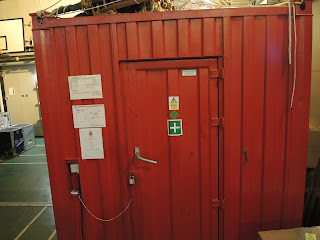























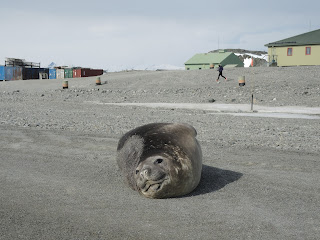



































































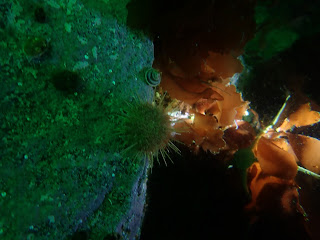









































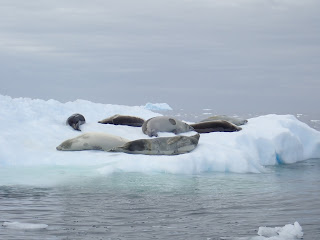








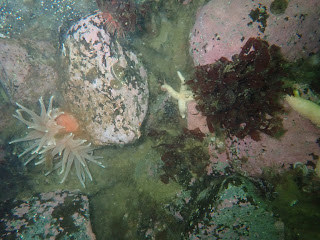




































































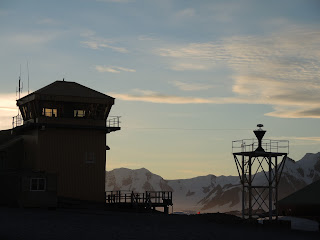


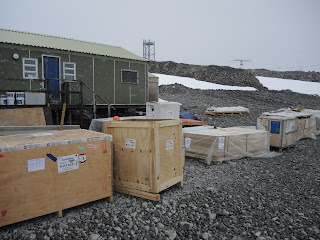
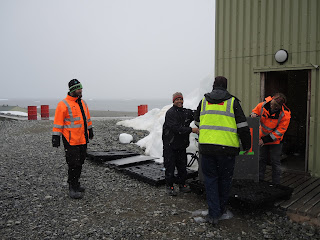















































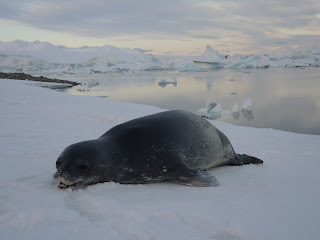
























































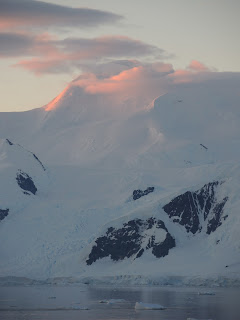







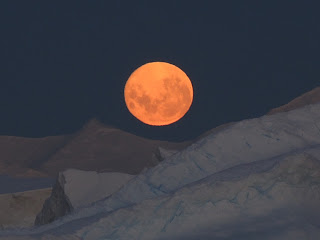


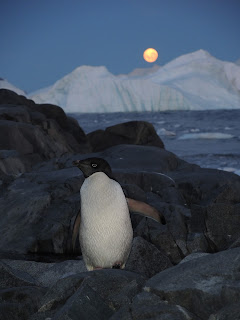


























































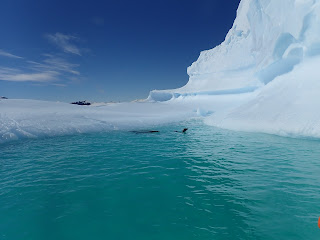











































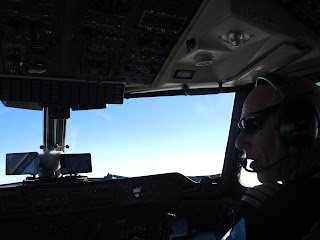




No comments:
Post a Comment